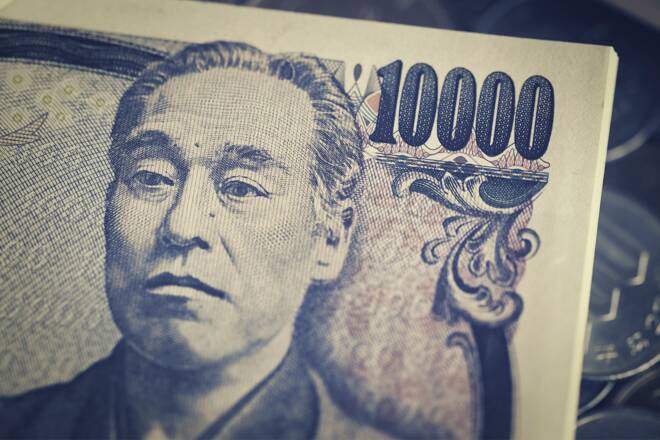Advertisement
Advertisement
USD/JPY Fundamental Daily Forecast – Lower on Demand for Safe-Haven Yen; Speculator Bets on BOJ Policy Shift
By:
The Dollar/Yen is edging lower on Thursday after a volatile trade the previous session. On Wednesday, the Forex pair shot higher after the Bank of Japan
The Dollar/Yen is edging lower on Thursday after a volatile trade the previous session. On Wednesday, the Forex pair shot higher after the Bank of Japan (BOJ) passed on a widely expected hawkish policy tweak. However, by the end of the session prices had retreated to nearly unchanged as investors doubled down on bets that the BOJ would shift away from its yield control policy.
At 02:22 GMT, the USD/JPY is trading 128.598, down 0.311 or -0.24%. On Wednesday, the Invesco CurrencyShares Japanese Yen Trust ETF (FXY) settled at $72.40, down $0.36 or -0.49%.
BOJ Policy Decision Recap
On Wednesday, the USD/JPY managed to eke out a small gain after the BOJ’s decision to stand pat on its ultra-loose monetary policy. By the end of the day, however, the Forex pair had given up most of its gains.
The unwinding of the previous day’s rally was expected because the move was essentially fueled by short-covering. Short-sellers bet heavily on a tweak in policy ahead of the BOJ meeting and were forced to bailout aggressively when policymakers decided to sit on their hands and make no changes.
The decision to pass on the change in policy was likely tied to current Governor Kuroda’s retirement in April. Rather than make drastic changes to his ultra-dovish policy and create volatility for the new leadership, BOJ officials decided to wait.
The BOJ defied market expectations by keeping its interest rate targets and yield band intact, and instead crafted a new weapon to prevent long-term rates from rising too much, in a show of resolve to maintain its YCC policy for the time being, according to Reuters.
The decision sent Japanese government bond yields tumbling the most in two decades at one point on Wednesday. The Yen also plunged about 2% against the greenback.
Japan Logs Trade Deficit Again in December as Imports Outpace Exports
Japan’s exports rose 11.5% in December from a year earlier while imports grew 20.6%, resulting in a trade deficit worth 1.45 trillion yen ($11.27 billion), Ministry of Finance data showed on Thursday.
The rises in shipments and imports compared with 10.1% and 22.4% year-on-year gains respectively expected by economists in a Reuters poll. The trade deficit compared with economists’ median estimates for 1.65 trillion yen.
For the whole of 2022, Japan logged a trade deficit of 19.971 trillion yen, the biggest amount on record going back to 1979.
Short-Term Outlook
The USD/JPY could get volatile over the short-term due to hawkish comments from Fed officials. On Wednesday, Cleveland Fed President Loretta Mester and St. Louis Fed President James Bullard both said they were expecting U.S. interest rates above 5% this year. This is not what traders wanted to hear since the market is pricing in a Fed terminal rate south of this level.
The comments are encouraging investors to dump risky assets and move money into the safe-haven U.S. Dollar, Treasury Bonds and the Japanese Yen.
For a look at all of today’s economic events, check out our economic calendar.
About the Author
James Hyerczykauthor
James Hyerczyk is a U.S. based seasoned technical analyst and educator with over 40 years of experience in market analysis and trading, specializing in chart patterns and price movement. He is the author of two books on technical analysis and has a background in both futures and stock markets.
Advertisement
